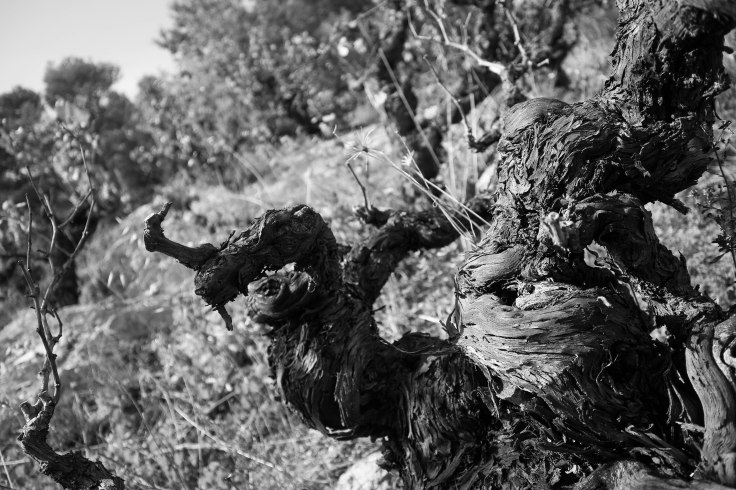The Mediterranean has just expanded out before me, lying there dark and still beyond the pine-covered ridges that define the boundaries of the valley. I am at the heights of the Penedés depression, around nine hundred metres above the sea, and behind me, to the north, flows the Anoia River, slowly meandering its way into Barcelona’s southern extremes in the El Prat Delta. Here, in the Penedés Valley and along the Anoia River, the grapevine has forever been at the heart of community and culture.
In the towns of the Penedés Valley and in the villages lying by the Anoia, the essence of wine is exemplified; labour, leisure, and naturality. From as far back as the Pheonicians, through the Roman and Moorish ages and on into the modern era, the communities of this land have dedicated themselves to the cultivation of Vinus Vitifera, in both its most popular varieties – Cabernet Sauvignon, Chardonnay, and Tempranillo – and its local expressions – Macabao, Parelleda, and Xarello. These last three grapes form the Holy Trinity of this region´s pride: Cava, the Catalan sparkling wine.
“To make a good product there is no secret… you need a good grape, and to not be stupid! – Winemaker Josep Sabaté i Coca
Cava came to Catalonia more than a century ago, when local producers – recently connected to foreign export markets by the arrival of rail to the towns of Vilafranca de Penedés and San Sadurni de Anoia – sought to capitalise on the popularity of French Champagne, producing their own version of the sparkling wine which rivalled the French one in both quality and price. After having been devastated by the Phylloxera bug that wiped out much of the vine stock, the region found its saviour in a combination of American biology – the vine grafting method – and French methodology – the méthode champenoise. Now, Cava is globally more popular than the French original, with over one hundred and thirty million bottles exported annually.

“But quantity is not so important”, winemaker Josep Sabaté i Coca tells me – “what is important is quality!” What good is it, he muses, if hundreds of thousands of bottles are moved when the quality is low – because of course, if you slap a cheap price tag on a bottle, someone will be there to buy it. “To make a good product there is no secret… you need a good grape, and to not be stupid! If you don’t do things right, you’ll have problems all year round.” This focus on quality has won his Castellroig wines a place in this year’s “Fifty Great Cavas” hall of fame, securing his 2012 Brut Nature Reserva, the 2008 Reserva Familiar, and the 2010 Brut Nature Gran Reserva positions in the annual list of the Cava world’s best.
Josep’s brother, Marcel Sabaté i Coca, “is more of a purist” he tells me with a smile. And meeting Marcel, you can see in his eyes – wide opened – and his manner of speech – using his whole body and face, not just the mouth – that this man really loves his wine. “Soil” he knows, “is the identity of a wine”, and he works on this premise, that as a winemaker he must defend the identity of his wines, the individuality, even if that means, for example, that the yield decreases year on year with the decrease in rainfall and the rise in heat.
Wine, more so than any other product, is sensitive to the elements, reflecting them in body, aromas, colour, and in sweetness or dryness, acidity and tannins…
Even in the face of such an environment, he rejects artificial irrigation for this hides the true terroir, the identity, of the wine. This year, he tells me, still with sweat on his brow after working in the vines, they’ve been chasing their tails trying to get the grapes in on time. This year nature has conspired to bring in an exceptionally early harvest, nearly a month early, after suffering a winter of low rainfall and a spring of high temperatures.

In wine though, the natural forces have always commanded the rhythm of work and the character of the product. Wine, more so than any other product, is sensitive to the elements, reflecting them in body, aromas, colour, and in sweetness or dryness, acidity and tannins. And in the Penedés the gorgeous landscape produces gorgeous wines, wines born from the pine-forested costal hills which grow into high mountains channelling Mediterranean airs over and under vines baking in the sun. If wine is a labour of love between man and nature to produce something for pure pleasure, then the Penedés is the best of wine.
Want to see more of Catalonia?
Take a look here…











Leave a comment